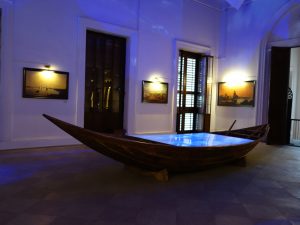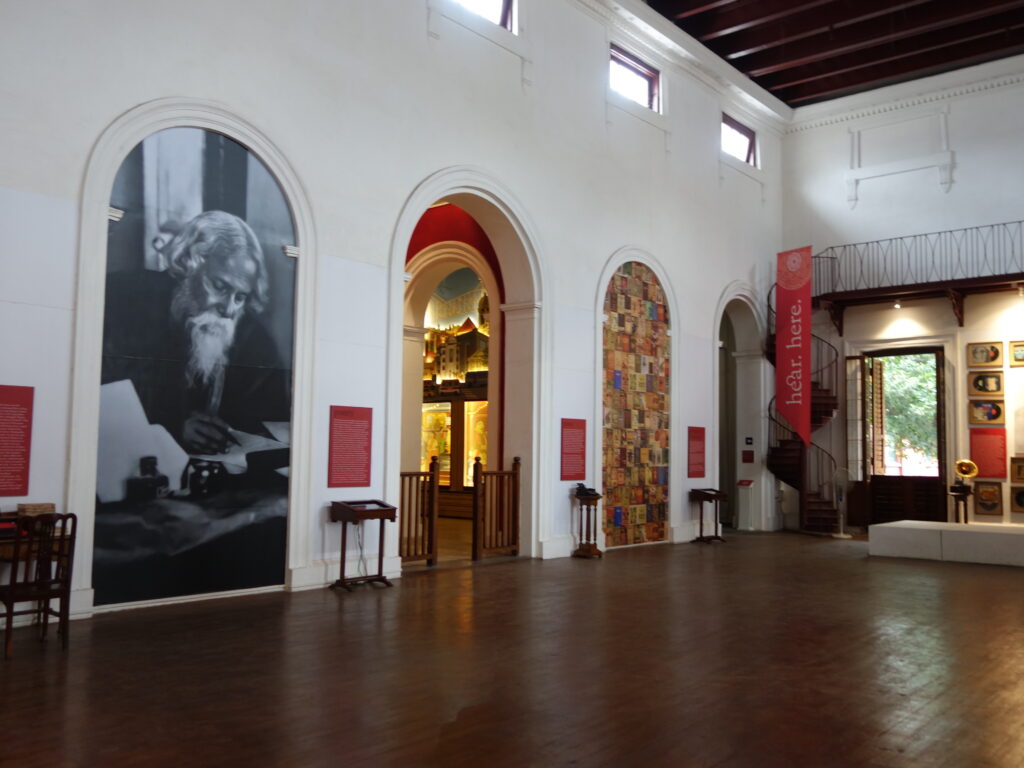With several of its imperial buildings, churches and other iconic structures restored, or in the process of being refurbished, attempts at preserving Kolkata’s heritage deserve mention. Various walks conducted by heritage groups, new museums, new and old exhibits and food festivals, the city’s rich cultural past is painstakingly being kept alive, even as more and more landmark buildings come under the bulldozer. Students of history and anthropology, conservation artists and designers, and even ordinary citizens, are receiving practical exposure by being associated with these archival projects and in raising awareness, the first step towards preservation. In many cases, it is revenue-earning as well.
The Dalhousie area long christened BBD Bagh (named after three revolutionaries of Bengal who fought the British!), grew as the administrative part of the city under British rule. This important hub of governance and trade resulted in a clutch of stately buildings such as Writer’s, the General Post office, Currency Building, Raj Bhavan (the Governor’s residence), Town Hall, among others. Due to trade and businesses, a number of grand mercantile houses, banks and treasuries came up in this very area as well. The majestic Town Hall became a centre of social events right through the nineteenth and early twentieth centuries.
Once under the state government, maintaining these heritage sites became costly, but Town Hall since restored, already hosts a number of important functions related to the arts. Close by, another majestic white building overlooking the famous Dalhousie Square – the Currency Building, recently renovated, has been turned into an exhibition hub. The first ever public event, a national jute and silk exhibition, was held within its halls in January this year; more shows are to come.
The story of the Metcalfe Hall
Yet, Metcalfe Hall on the crossing of Strand Road, which runs parallel to the River Hooghly and Hare Street, remained grossly neglected.
In addition to trade and commerce, the British were helping to create a multifaceted society, where learning, love for nature, the arts, and other pursuits, were gradually taking shape in the local cultures. Metcalfe Hall, named after Sir Charles Metcalfe, has a very interesting history. Sir Charles was an administrator of British India between the years 1822 and 1845. For a year, 1835 to 1836, he was the acting Governor-General of India, but today is more remembered as someone who worked for a free press. So the first public library was housed here before it was shifted to Belvedere House in Alipore, the current location for the city’s famous National Library. Rare books, documents, photographs, works of art, still languish for want of restoration and space.

The majestic Metcalfe Hall, therefore, is a tribute to learning and free speech. According to Manish Chakraborty, architect and conservationist, who is closely associated with renovation of several historical buildings, “Metcalfe Hall was where the Indian Horticultural Society was headquartered, in addition to the imperial library, before both shifted to their respective addresses in Alipore.”
The imposing Corinthian columns of Metcalfe Hall have an interesting architectural history, representing imperial architecture at its best. Similar to the Greek temples in Athens, notably Temple of the Winds, the columns add a very special grandeur. The Town Hall renovated by the Public Works Department, on the other hand, followed the Roman Doric style of architecture.
Today, Metcalfe Hall with its commanding open doors and windows, the wooden floors and staircases that resound with footsteps, remind us that the Hall has sprung back to life with the help of the Archaeological Society of India. In order to attract footfalls, an exhibition titled Ami Kolkata (I am Kolkata) has been mounted inside Metcalfe Hall. Very well curated, with exhibits that capture the quintessential spirit of the city, a sense of nostalgia grips you the moment you enter. It simultaneously reminds you that this sort of a museum is a welcome addition to the city space, to remind you of things that are fast vanishing or have indeed vanished from the cityscape.
From the alpana at the entrance depicting certain motifs of gas lights, stained-glass type windows, to stylised Bankura horses and dholak, images collide to put forth the spirit of the city that chance found.
The three-storied interiors are sparsely spread out, which gives a sense of not only space, but time as well. There is an interactive installation placed inside a boat. Visitors can get a brief blurb on some aspects of Kolkata’s history, such as the rise of babu culture, the Bengali renaissance, Bengali sweets, and so on, by the touch screen method.
Posters of well-known films – art-house and commercial, covers of books and 3-dimensional rare photographs besides artefacts, are exhibited such that it is not cluttered or too crowded. The craft of shola, which plays a very big part in Bengali rituals, is explained with exhibits. The Kolkata life and culture, which included several communities who came from outside the country, are depicted through photographs.
There were several confectionaries in old Calcutta, but Nahoum’s continues to be the most iconic; or a picture of the Chinese lady selling noodles, tea, etc., in old Chinatown.
The changes in the city landscape are not difficult to miss. The once laid-back graceful first city of the Empire gradually grew with teeming millions, to bring us to today’s times; when blue and yellow buses ply, than the red double-deckers of yesterday, and a newer riverfront. Yes, the exhibits do include the usual stereotypes of rossogolla, phucka, the rickshaw, Chinese families, famous faces modelling against the background of Victoria Memorial. There is a lot that perhaps could still be accommodated, but overall, a certain civic spirit has been captured. Let us celebrate that.

